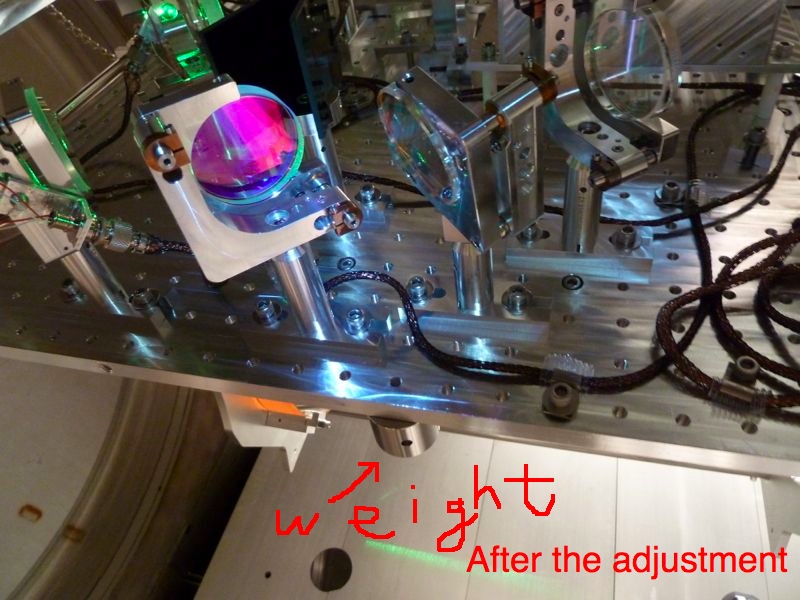Seems like the problem we had when using a green beam reflected off of a 50-50 IR beam splitter was because of the fact that 50-50 surface for 1064nm works as a very good AR for 532nm.
The BS in question is this: https://dcc.ligo.org/LIGO-E1000671-v1
Corey used a fiber coupled green laser as the source, placed a PBS cube for 532nm to ensure that the P-pol light is transmitted, and used a HWP for 532nm to change the polarization.
There are two beams in reflection, one from 50-50 IR BS surface and one from the back surface. There is one beam spot in transmission, because the 50-50 IR BS surface is very small. Anyway:
|
|
P-pol |
S-pol |
|
50-50 IR surface reflection |
0.92% |
0.044% |
|
AR surface reflection |
6.3% |
20.7% |
|
Transmission |
92% |
79% |
On TMS ISC table (and in the arms) the green light has S-polarization, and according to Corey's measurement we're totally screwed.
Now that we know about this, we could either align the red QPD path assuming that there is an invisible beam next to a visible beam at a known distance, or we could place a HWP on the ALS table and inject a wrong polarized beam to see if we get anything.
Corey will write a one-page document and add it to E1000671.













